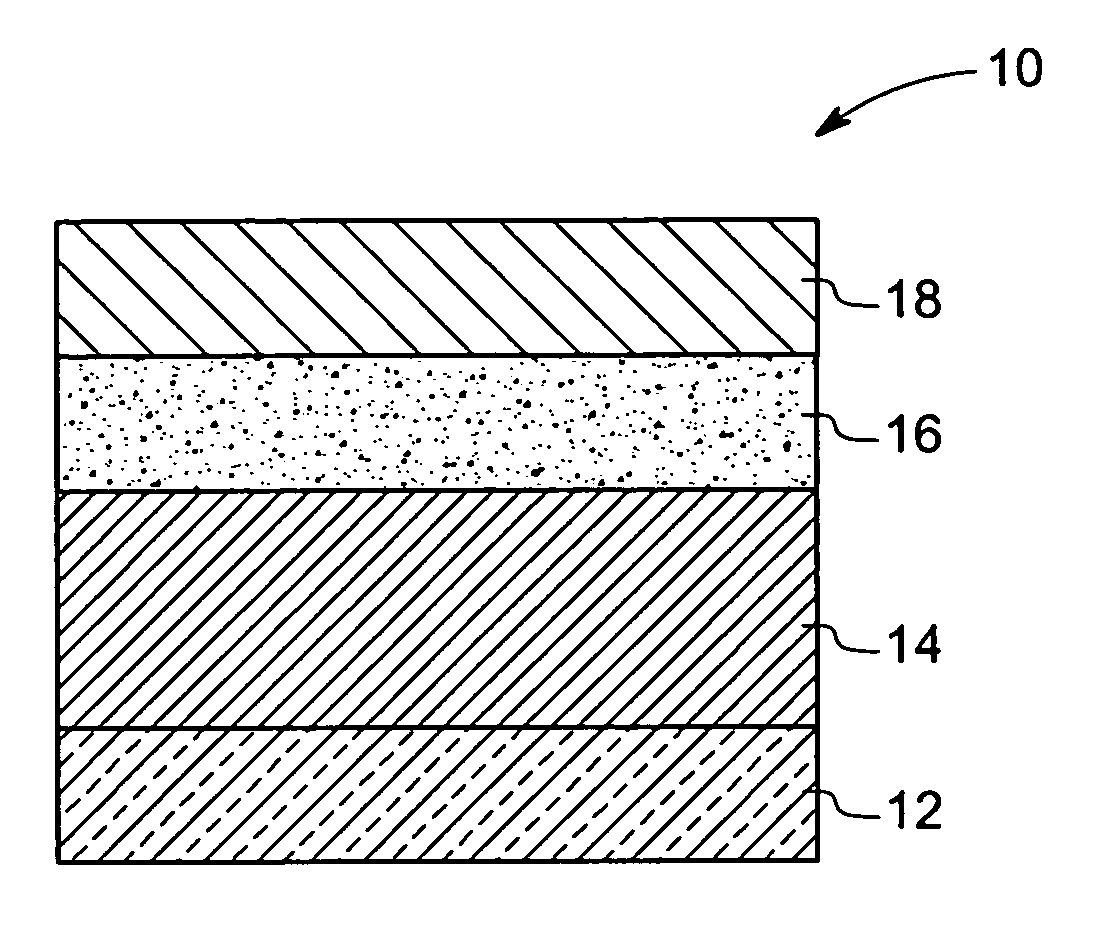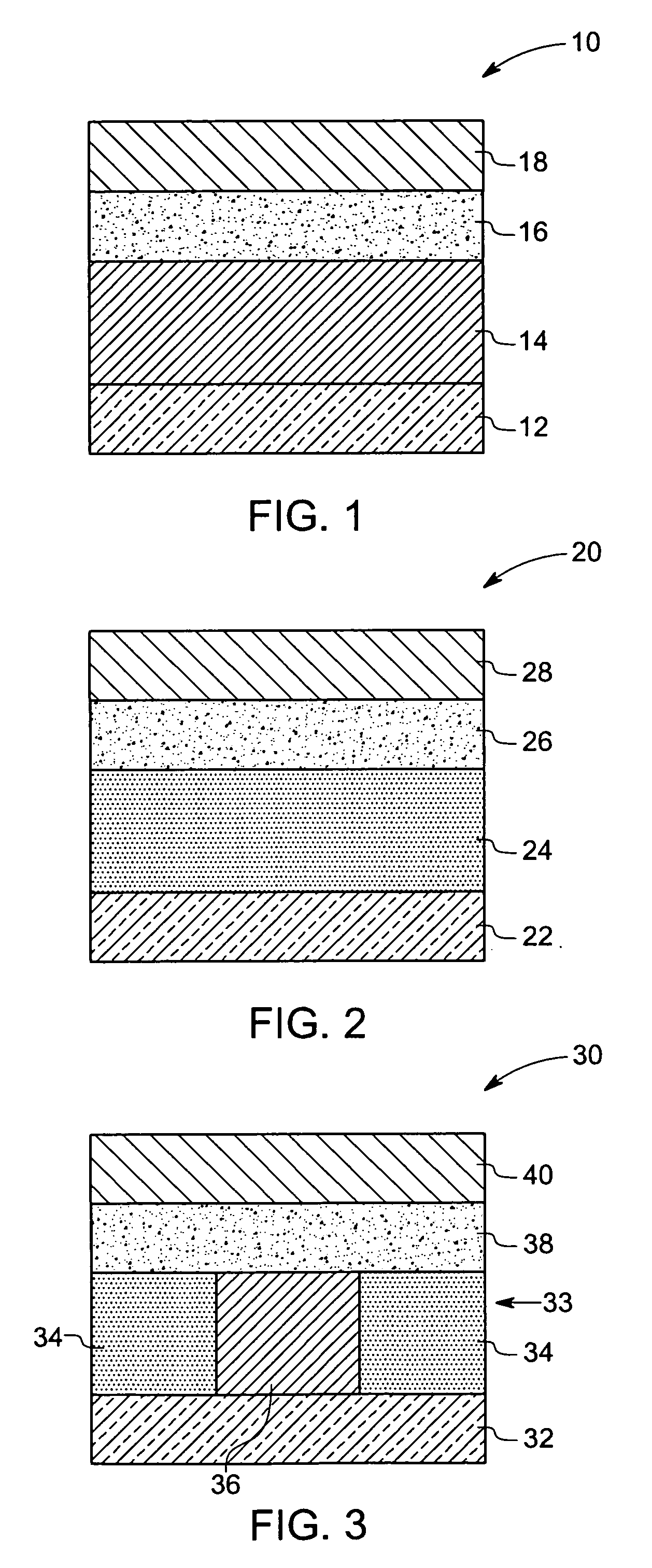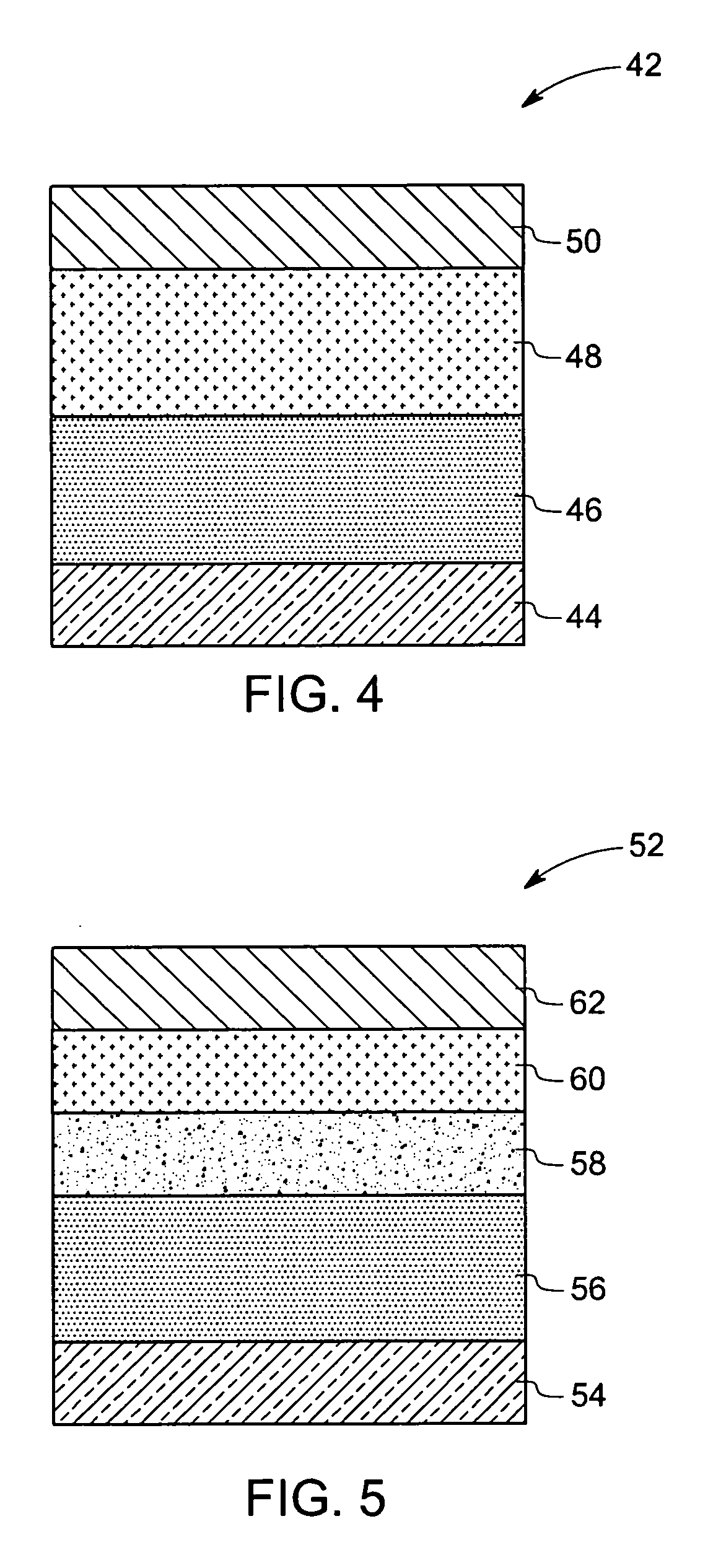Organic light emitting devices having latent activated layers and methods of fabricating the same
a technology of activated layer and organic light, which is applied in the direction of liquid/solution decomposition chemical coating, natural mineral layered products, coatings, etc., can solve the problems of known electron donors that typically react with air or moisture and may decompos
- Summary
- Abstract
- Description
- Claims
- Application Information
AI Technical Summary
Benefits of technology
Problems solved by technology
Method used
Image
Examples
example 2
[0083] Six OLED devices were fabricated. The OLEDs consisted of a blue light-emitting polymer (LEP), ADS329BE [poly(9,9-dioctylfluoenyl-2,7-diyl)—end capped with N,N-Bis(4-methylphenyl)-aniline], obtained from American Dye Sources, Inc, Canada, and used as received without any further purification, as the emissive layer material.
[0084] The OLEDs were fabricated as follows. ITO coated glass, patterned using standard photolithography techniques, was used as the anode substrate. The OLEDs employ an ITO anode with and without an additional anode-activation layer but otherwise the same structure. As shown in the Table 2, both device A and device B had the same ITO anode except that the ITO substrate in device B was further UV-ozoned for 5 minutes prior to the application of ADS329BE. Devices C and D had the same anode-activation layer of PEDOT-TMA (about 40 to 45 nanometer) except that the PEDOT-TMA layer in the device D was further UV-ozoned for about 5 minutes prior to the application...
example 3
[0087] A 2 liter, 3-neck flask was charged with Adogen 464 (about 23 grams), 2-bromo-propane (about 235 milliliter), potassium hydroxide (saturated, aq, about 1.2 liter), and freshly cracked and distilled cyclopentadiene (41 milliliter). The contents were stirred with a mechanical stirrer and heated to about 80° C. for 24 hours. Gas chromatography analysis of the top layer showed excellent conversion to tetra-iso-propylcyclopentadiene. The entire reaction mixture was poured into a separatory funnel. Addition of water and hexanes broke up the emulsion and the top layer was collected. The bottom aqueous layer was washed with hexanes, and a total of about 1.5 liter of organic solvents was collected. The organic layer was then dried with magnesium sulfate and then filtered and washed with more hexanes. The total organics were then subjected to rotary evaporation (30 mmHg) and 80° C. to remove hexanes and leave a higher boiling oil. The oil was then subjected to vacuum distillation throu...
example 4
[0093] Four OLED devices were fabricated. Two solutions were prepared in the same glovebox (moisture and oxygen was less than 1 ppm and 3 ppm, respectively) prior to device fabrication. The first solution (referred to OAP9903:SR454) included a green light-emitting polymer poly[(9,9-dioctylfluoren-2,7-diyl)-alt-co-(benzo[2,1,3]thiadiazol-4,7-diyl)] (OPA9903) obtained from H. W. Sands, Corporation, Jupiter, Fla. 33477, USA and an acrylate-based adhesive ethoxylated (3) trimethylolpropane triacrylate (SR454) obtained from Sartomer, Exton, Pa. 19341, USA. Both materials were used as received without any further purification. The mixture solution was prepared by mixing about 2.5 milliliter of a 2% OPA9903 solution in p-xylene with about 2 milliliter of a 1% SR454 solution in p-xylene. The resulting ratio of SR454 to OPA9903 was about 30 wt %. The second solution (referred to as OPA9903:Ba-TPCP) including OPA9903 and Ba-TPCP was prepared by mixing about 1.5 milliliter of a 0.6 wt % OPA990...
PUM
| Property | Measurement | Unit |
|---|---|---|
| Pressure | aaaaa | aaaaa |
| Wavelength | aaaaa | aaaaa |
| Electrochromic | aaaaa | aaaaa |
Abstract
Description
Claims
Application Information
 Login to View More
Login to View More - R&D
- Intellectual Property
- Life Sciences
- Materials
- Tech Scout
- Unparalleled Data Quality
- Higher Quality Content
- 60% Fewer Hallucinations
Browse by: Latest US Patents, China's latest patents, Technical Efficacy Thesaurus, Application Domain, Technology Topic, Popular Technical Reports.
© 2025 PatSnap. All rights reserved.Legal|Privacy policy|Modern Slavery Act Transparency Statement|Sitemap|About US| Contact US: help@patsnap.com



